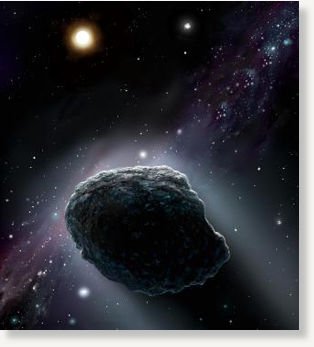Astronomers may be missing these so-called 'dark comets' because their icy and reflective surfaces have become hidden under an obscuring layer of dust.
Comment: We recommend reading the works of James McCanney, especially his Plasma Theory of Comets, to understand that comets are not "dirty snowballs" after all.
Near Earth objects (NEOs) are comets or asteroids that have been nudged into a possible collision path with the Earth. The international program to discover NEOs; Spaceguard, which includes NASA's NEO program, has identified around 6,000 NEOs so far, most of which are asteroids.
History of violence
But dark comets with unpredictable orbits may pose a greater threat than asteroids, which are easier to spot, according to astrophysicists Bill Napier, from the Cardiff Centre for Astrobiology in Wales, and David Asher, from Armagh Observatory in Northern Ireland.
"We may be dealing with a population of dark objects, carrying a lot of kinetic energy, which are not being properly picked up in the Spaceguard surveys," the researchers write in the February issue of the journal Astronomy & Geophysics.
Some comets scoot into the range of Earth from near Jupiter or further out, but appear regularly, like Halley's Comet. Others originate in the distant Oort cloud, a spherical comet nursery predicted to exist around one light-year from the Sun. These have orbits in the range of a million years, and are harder to predict or to spot, especially if they are too far away from the Sun to develop a characteristic comet tail as their icy surface melts.
When the Solar System passes through the galactic plane - the flattened disc of the Milky Way galaxy - molecular clouds may send Oort cloud objects hurtling into the inner Solar System, said the researchers.
Galactic mix-up
They say the timing of the Solar System's passage through the galactic plane - around 20 to 30 million years - closely matches spikes in the distribution of large impact craters on Earth for the past 250 million years. They conclude that comets have been responsible for most of Earth's impact craters and may pose an unrecognised risk to our civilisation.
Current NEO programs might be "monitoring a swarm of bees while standing on a railway line with an express train due," says the study.




[Link]
Take a look at the close approach data!!!